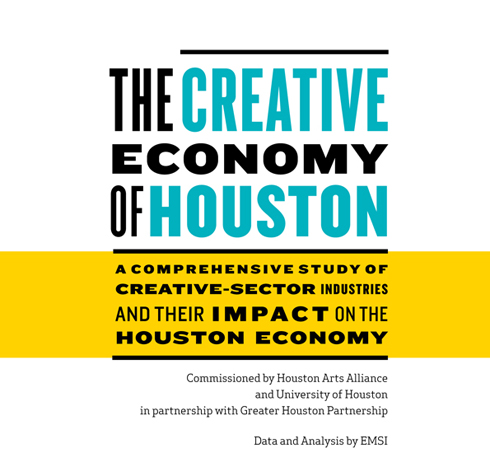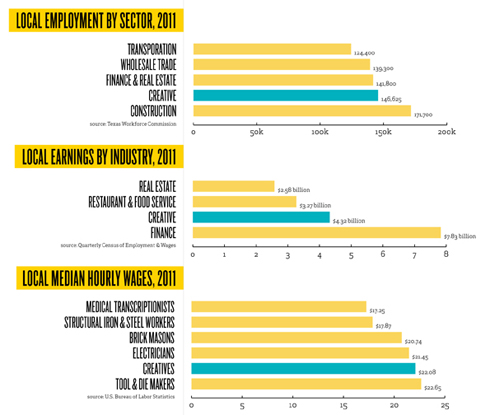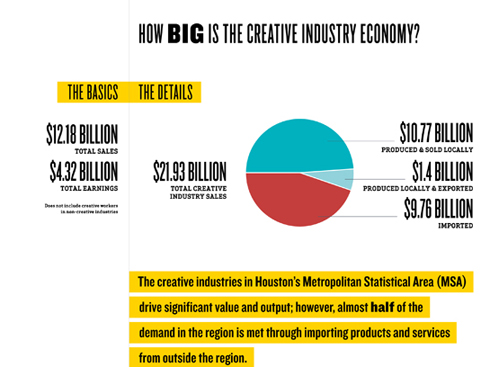
Images from the study were designed by CORE Design
Last month, the Houston Arts Alliance and the University of Houston published “a comprehensive study of creative-sector industries and their impact on the Houston economy” (1). Drawing from data regarding creative-sector jobs in five other major American cities—Dallas, Chicago, Los Angeles, Miami, and Philadelphia—the study analyzed the potential for creative job growth in Houston, as well as how to define and expand our current creative sector.

As it turns out, Houston’s creative economy is increasing more rapidly than the other five cities, “growing over eight percent over the past ten years,” (21) as compared to one percent growth in Dallas and job losses in the other four cities. Houston and Dallas are also the only two cities on the list projected to have a larger creative sector in 2016 than in 2001, with Houston clocking a 16 percent growth rate. Creatives in Houston are also paid more on average, $21.58 an hour, with Los Angeles in second place at $20.94 an hour.
Along with analytical data, the study also interviews creative names around Houston, and all of them agree on one thing: you can achieve anything here. The environment of the city fosters and yearns for art. Houstonians appreciate the creative industry as much—if not more—than many major American cities, and as a city we love supporting the arts, as well as new creative projects.

Despite all these factors, however, Houston’s creative sector is still the smallest of the six cities. Contributing to this problem, the study cites, is perception. Houston is not perceived as a creative, forward-thinking city. Also, much of Houston’s creative goods and services are imported, therefore draining the economic pool.
For this, the study offers a list of ways to attain and expand economic growth, as well as establish Houston’s creative image. Chief among these is reaching out to creatives around the country and inviting them to come to Houston, reinvigorating empty industrial and retail spaces for shared-use, investing in K-12 education and art programs, creating a more exciting, competitive space for recent creative graduates, and sharing the story of Houston itself.
We’re the fourth largest city in the nation, with world-class museums and performing arts centers, an increasingly diverse population, and a growing green economy. While we are experiencing creative job growth, the size of our creative sector should be exploding to rival that of Dallas and Chicago, our closest competitors in geography and city-size.

The study also shows Houston’s creative economy is important, both economically and culturally. The projected growth means more jobs and an expanding image for our city. There is always more to be done, more to invest in, however, and working on issues and solutions the study discusses will aid in that. Not only would addressing them further our growth, but also push Houston to the forefront of creative economies in the nation.
For more information and a full download of the study, visit Houston Arts Alliance.